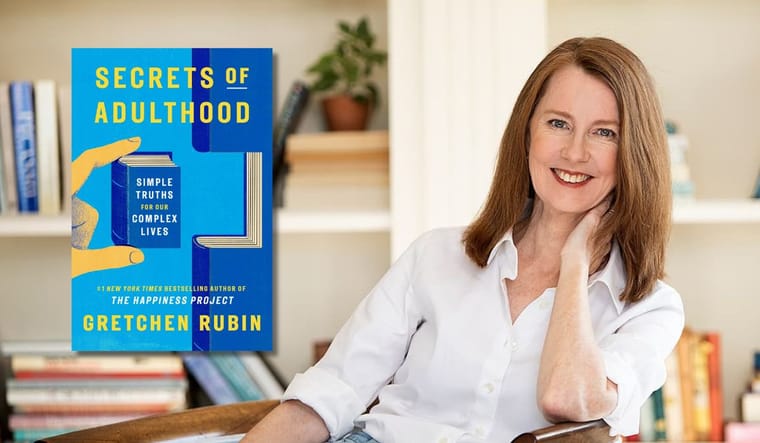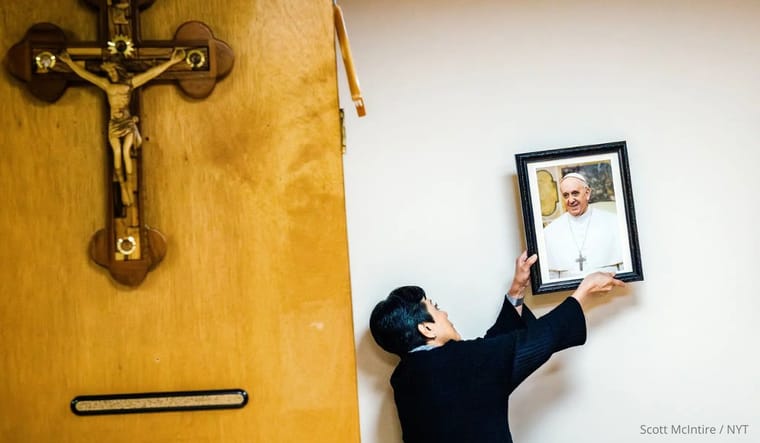Hiding In Plain Sight: Ken Burns’ New Film is Shining a Light on the Mental Health Crisis that Has Prompted A New National Hotline
Editor's note: If you are struggling with your mental health or suicidal thoughts, call the new national suicide prevention and mental health hotline at 988.
Maclayn was just 9 years old when he started having what he calls “sad thoughts.” Random things would make him despair and he started feeling different from his friends. “I remember a lot of nights I’d sit in my bed and cry,” says Maclayn. “I had thoughts of wanting to end my life—like I wasn’t meant to be on this Earth.”
When Maclayn and his parents were approached about Maclayn being interviewed for a documentary about youth mental health, his parents were understandably hesitant. “We thought it would open these wounds we were trying to heal,” says Maclayn’s mom, Mary. But Maclayn was insistent on talking to the filmmakers. “I wanted to share my story,” he says. “I knew if my story would help one person, that’s all I needed to do.”
Maclayn succeeded in that goal—and along with 22 other youth and young adults who share their stories in the new documentary, Hiding in Plain Sight: Youth Mental Illness, he is moving the needle when it comes to helping all of us look at this highly publicized (though often misrepresented) issue. The film provides an intimate look at what it’s like to experience the symptoms of mental illness—from depression to addiction to suicide ideation—and the hope is that children and young adults who are struggling may see themselves in one of the stories and ask for help before it’s too late.
We sat down with Erik and Chris Ewers, the film’s co-directors, to hear more about what it was like to make this documentary, what they learned, and what they want everyone to know about this important topic.
A Conversation with Erik and Chris Ewers
What did making this film mean for you on a personal level?
Erik Ewers: First of all, the kids’ honesty, their candor, their ability to be so articulate—all of that moved us beyond tears. When you hear what many of them have gone through, it just breaks your heart. There’s this wisdom these kids have, and it’s so unfortunate it had to come this way.
This film was also intensely personal for me. I think this film taught my brother, Chris, and I so much about ourselves, our past, our parents, about PTSD—so much that at age 52, I was able to confront the things I have basically ignored for most of my life.
It was a very rough three years for me while we were working on this film. I’d be in the editing room, working with the stories of all of the young people we interviewed, and it was like a therapy session. I wanted this film to feel like a group therapy session. These kids have so much to teach us about what this mental health crisis is—what it looks like and how it feels.
This film is a mission. Executive Producer Ken Burns said to me after he edited the film, “I can’t watch this as a filmmaker. I watched it as a father.” Then he said, “This will literally save lives.”
Chris Ewers: When Ken approached Erik and I about the idea of making a film on youth mental health, it hit home for both of us in similar and different ways. Growing up, we knew nothing about mental health—but we had plenty of experiences with mental illness. We were intrigued and also slightly terrified about trying to wrestle such a massive topic into a film. But we were honored to be asked; it’s such an important topic.
When we started, it took a year and a half of research and conversation to start identifying the youth and young adults who were featured in the film. Over the course of the three years it took to make the film, we were deeply impacted. We couldn’t help but see parts of ourselves in every single one of their stories. It was a cathartic evolution for us, as well as the subjects of the film. We came out of it with a much better understanding and empathy and skillset to be able to continue to talk about this and to make progress in our own lives as well.
There are so many young people featured in the film! I assume that was intentional—like you wanted to make sure every kid watching had the chance to see themselves?
Chris Ewers: We realized right away that it had to be an experiential film. If we did it right, we could help reduce the stigma around mental illness—and to do that, we knew we had to display as wide a range of life experiences as humanly possible. We went to great lengths to make sure we were as inclusive as possible—race, gender identity, socioeconomic and cultural background, geographic location—and of course a wide range of symptoms as well, and in all severities.
It’s our hope that whoever the viewer is can see themselves in someone’s experience, and hopefully feel better able to share your own experiences.
What was one of your biggest takeaways after making this film?
Erik Ewers: It can be summed up in one word: relatability. The critical need for relatability is one of the most important things when it comes to getting on your path to wellness. Because mental illness is so stigmatized. We talked to 23 young people from all kinds of different backgrounds with the hope that it would reach other kids who are quiet, or who are struggling in school or at home. If they see themselves in this film and see how these young people we interviewed managed their mental health issues, I think it’ll help start a conversation.
My favorite sentence of narration in the film is this: “The first and often most difficult step is to simply start talking about it.”
We hope the film will be a starting point for anyone out there who’s struggling to figure out how and where they fit in to this mental health story.
What do you want parents and grandparents to know about the state of youth mental health?
Erik Ewers: Our culture tends to whitewash things, especially when it comes to kids. I can’t tell you how many times we were told when making this film, “It’s too dark” or “You’re making a big mistake.” Yes, it can be a very dark topic, and it involves children, and it’s hard. But I like to cite one of the most important moments and biggest inspirations for Chris and I for this project. I was on a walk with Patrick Kennedy [former Congressman and mental health advocate who has been public about his own struggles with bipolar disorder and addiction] and we were imagining what the film could be. He took me aside and said, “I think I have something very important to tell you. In all my decades advocating for mental health, I realized one fundamental premise: You have to talk about the bad first. Because if you talk about the good first, nobody’s going to listen.”
That hit me like a ton of bricks. The mental health awareness for kids I’ve seen is “Pick yourself up, it’s not so bad!” There’s never this honesty about what it really is. Yes, this is a difficult film. But it’s intended for families of teens and young adults—to watch together. If you do that, and you follow the journey from the very beginning to the very end, that’s where the understanding and conversations will come from with your child.
On July 16, the new national suicide prevention and mental health hotline—988—launched. How needed do you think this is?
Chris Ewers: It’s unbelievably exciting. As a nation, we are finally recognizing some fundamental truths about mental healthcare. The largest mental healthcare institution in our country is the criminal justice system. That is so ass backwards. I think this hotline is acknowledgment that mental illness is a problem we need a solution for, and I think we’re finally on the right track with 988. It gives me hope. I think it’s just the first step in what will hopefully be a tipping point for mental health awareness.
I had a chance to talk to Maclayn, who was just 9 years old when he faced a mental health crisis for the first time and 11 when you interviewed him for the film. What touched you about his story?
Chris Ewers: Maclayn was 11 and I was 41 when we interviewed him, and I think it’s safe to say he was more mature than I’ll ever be!
I’ll never forget an event we did in Las Vegas, where Erik and I, Maclayn and his parents were on a panel. Afterward, a gentleman who was operating a camera in the back asked to talk to Maclayn. He told him that he was institutionalized when he was 13 and it impacted him negatively his whole life. He said he only wished he could’ve met Maclayn back then; it would’ve helped him realize he wasn’t alone.
Erik Ewers: Maclayn had always said, “If I help just one person, it’ll be worth it.” After that camera man left, I turned to Maclayn and said, “Remember when you said you wanted to help just one person? You just did.”
Please note that we may receive affiliate commissions from the sales of linked products.



